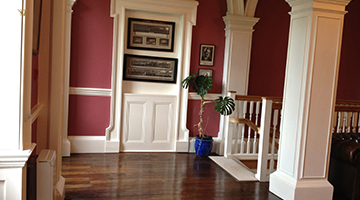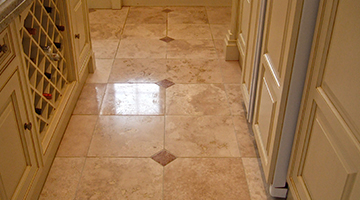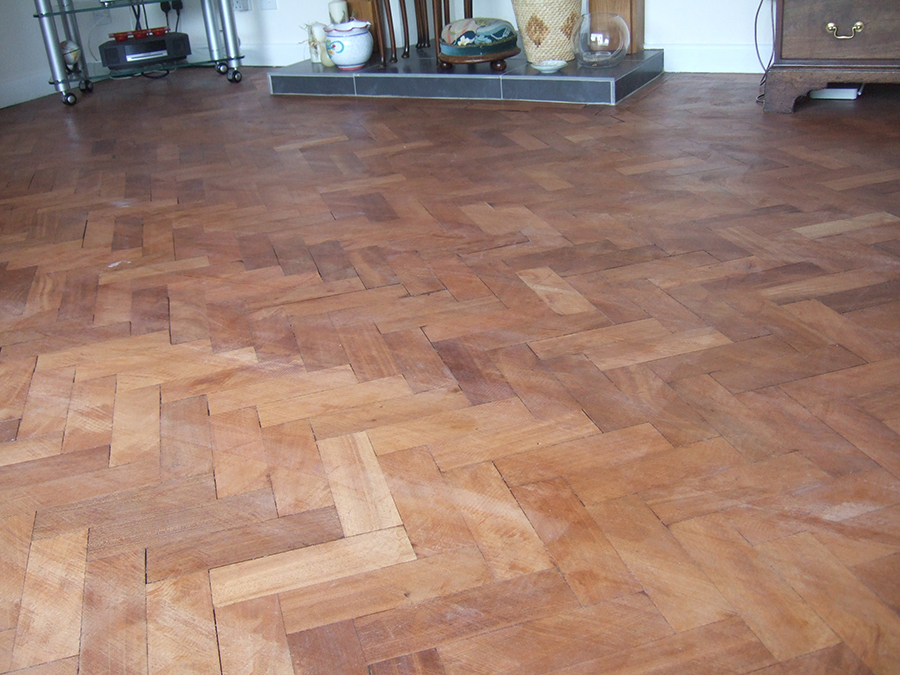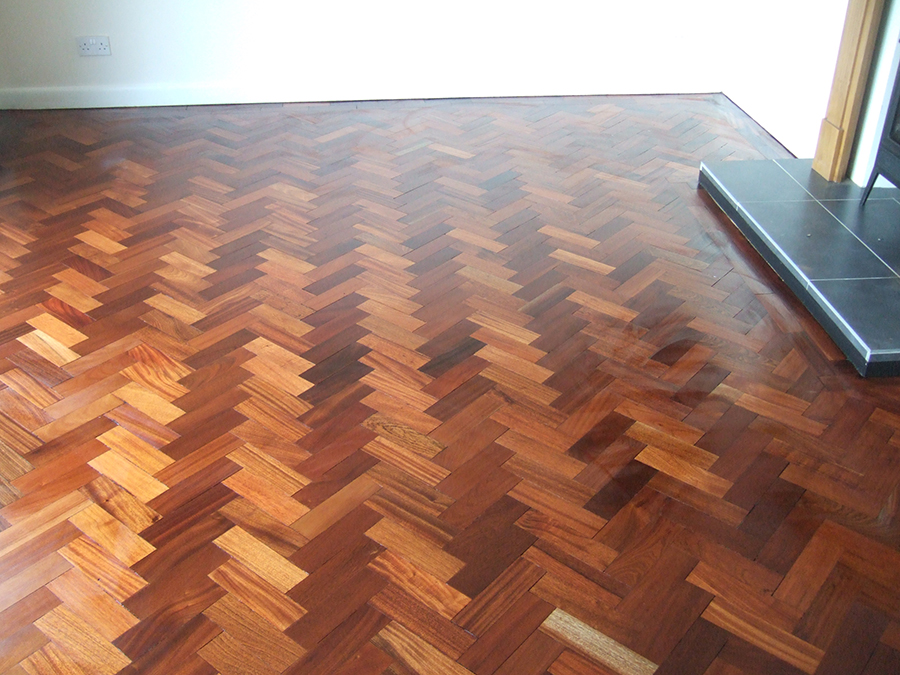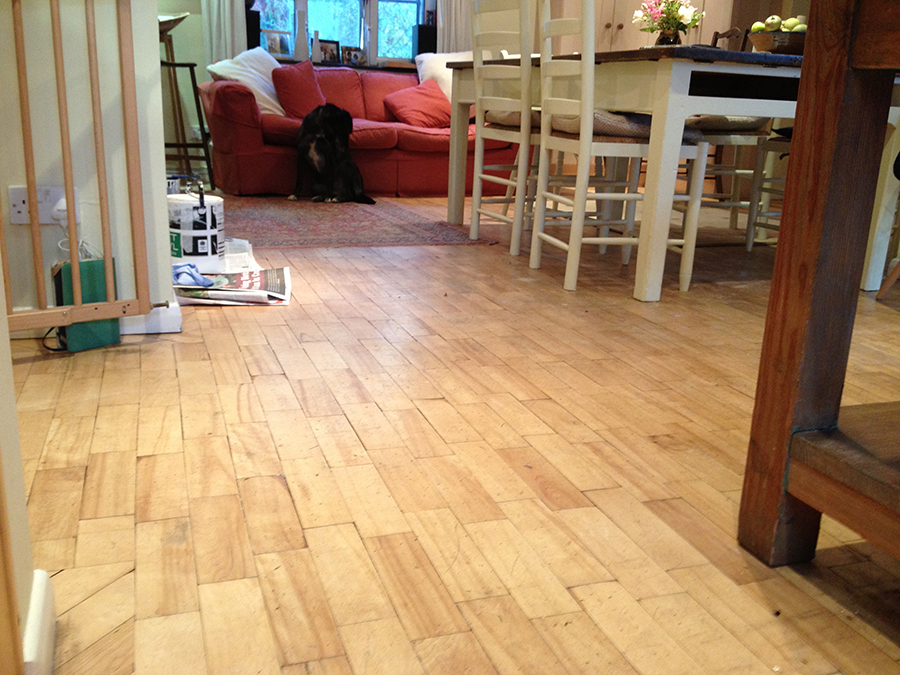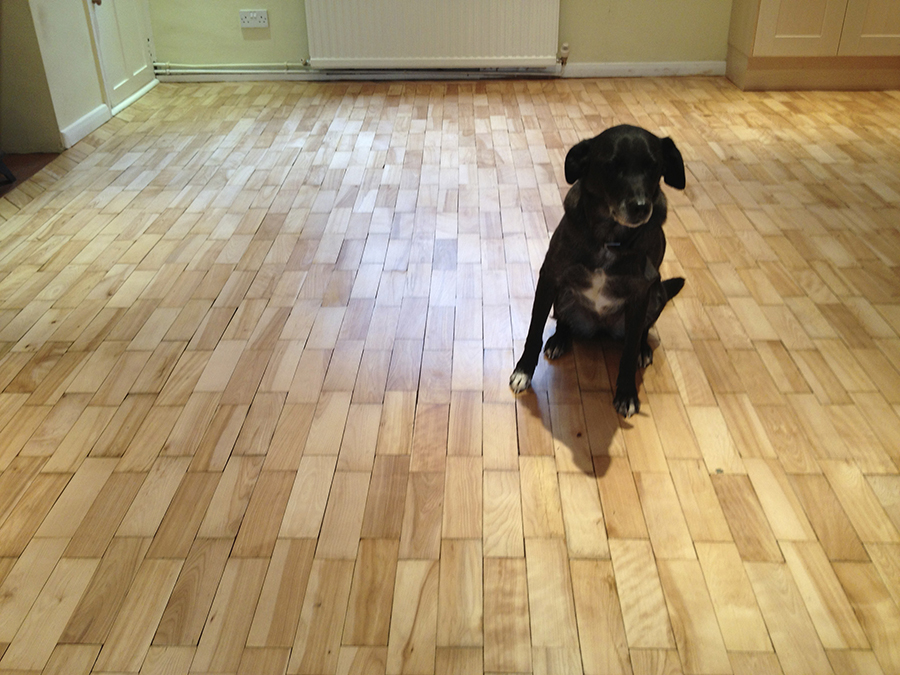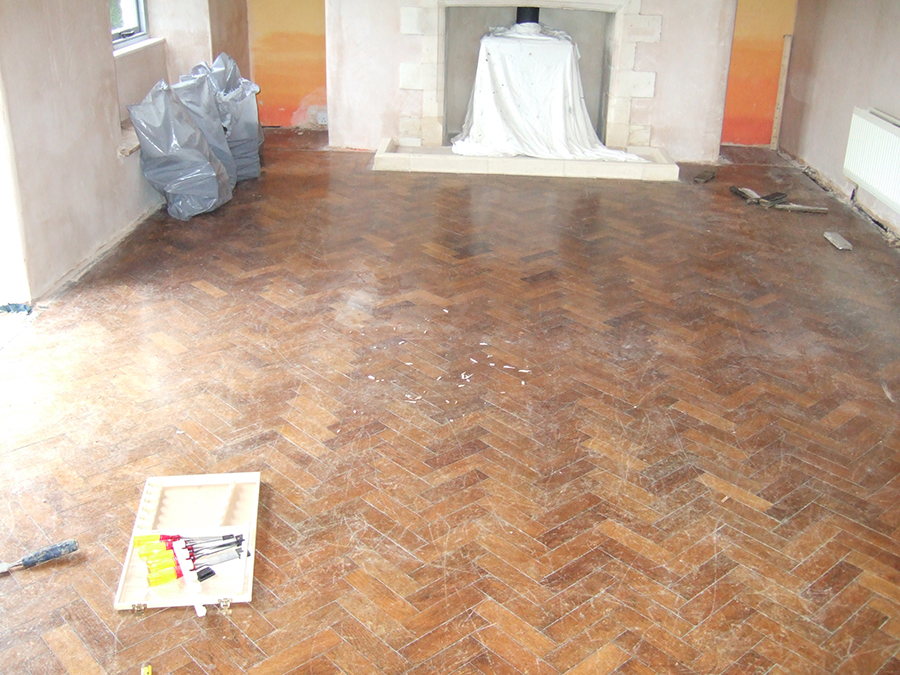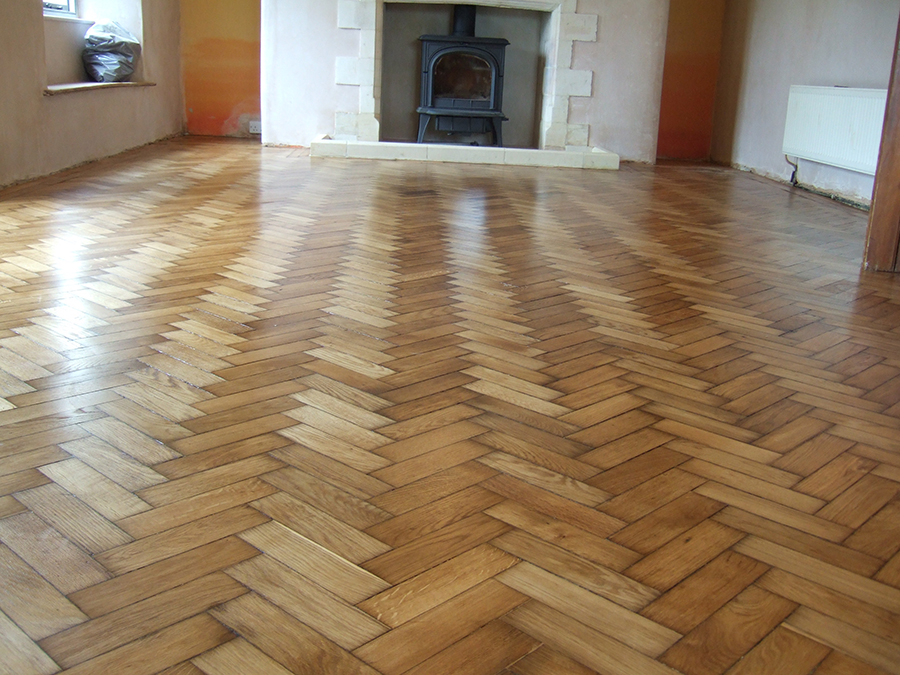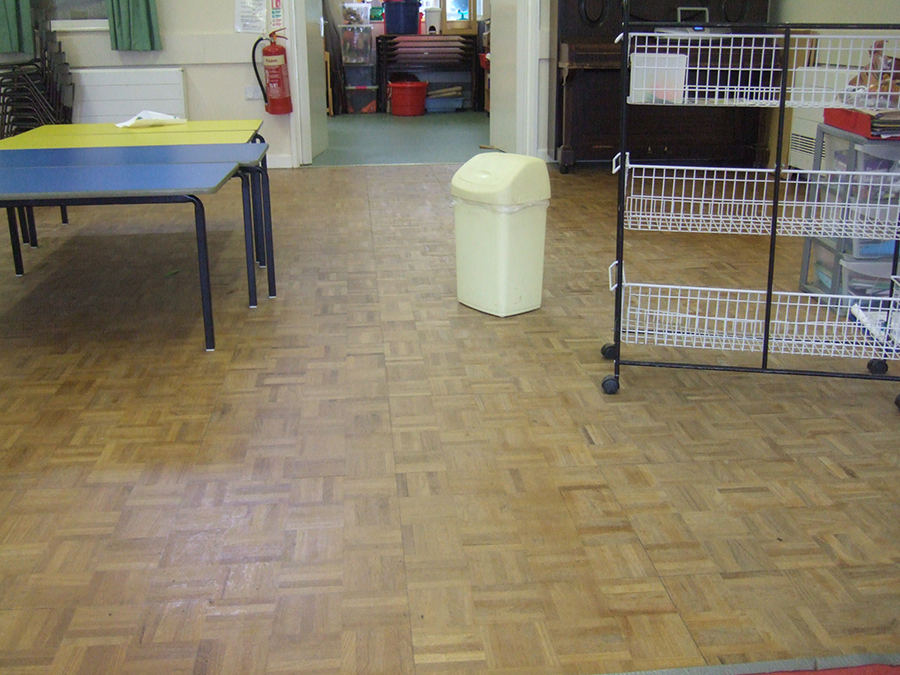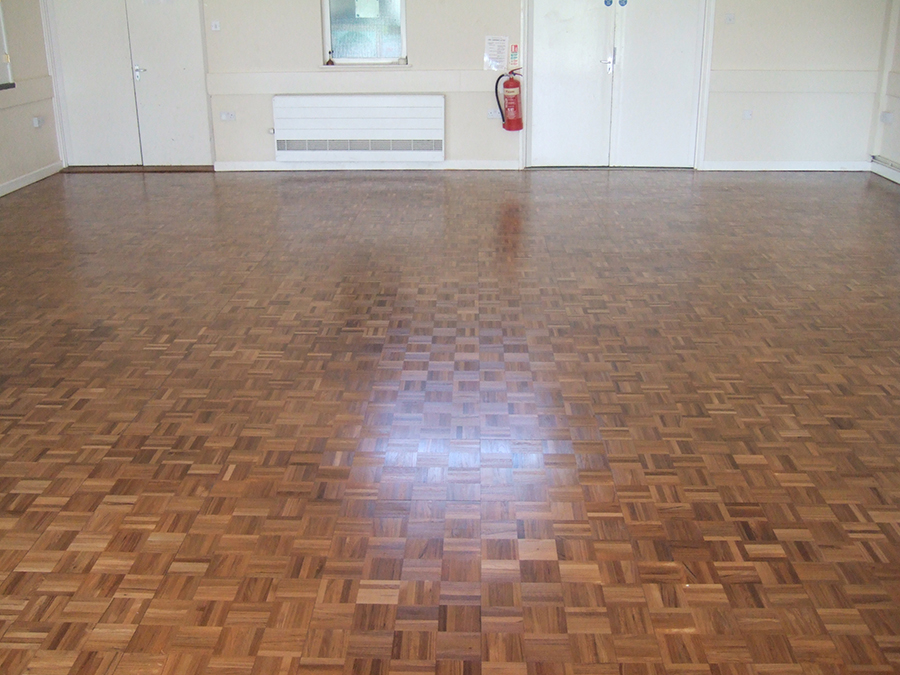Parquet floor restoration
Our Parquet wood floor restoration services:
- Refinishing service via *specialist sanding equipment and application of hardwearing lacquers.
- Replacing missing or damaged parquet blocks.
- Re affixing any loose blocks.
- Renewing substrate and under floor leveling.
- Fireplace and other concreted areas removed and prepared for blocks laying.
- Gap filling of the parquet floor.
- Supplying full aftercare information.
- Complete installation of parquet floors.
Lacquer or Oil wax finish?
Based upon our experience and after listening to feed back from our customers - some of whom have already had an oil/wax finish we have drawn the conclusion that lacquer normally provides the best finishing choice. Our opinions are based on the fact that oil/wax requires frequent re coating, and sometimes machine polishing. As always we consider 3 important points when choosing a floor finish:
- Compatability and appearance with the floor type.
- Longevity and wear.
- Ease of maintenance.
Depending on the amount of foot traffic and type of use your floor will be subjected to a properly prepared Lacquered floor can last for up to 8 years without the need to recoat (which is simple to do without the need to 'deep sand' the floor again) whereas oil wax may only last a few years before it becomes contaminated especially in high use areas and will need deep sanding and re oiling again.
As both the colour and finish of both systems are almost the same there seems to be no reason to opt for oil/wax. For the above reasons we almost always recommend a water-based lacquer to finish your wood floors. There are of course exceptions to the rule and we do use oil wax where the wood type demands the use of an oil-based product to deeply penetrate the grain such as our period floor renovations.
Important! Avoid drum sanders when finish sanding parquet floors Parquet and block floors are laid in different directions it is important to deploy the correct sanding machinery when sanding the floor. We use specialist multi directional sanding equipment, which is specifically designed to avoid damaging and scratching the blocks. Except for the initial levelling of the blocks the use of drum sanders to finish the floor should always be avoided, as these can cause irreparable damage to your parquet floor.
What to expect:
Oak parquet floor with loose blocks in Clyro
Before
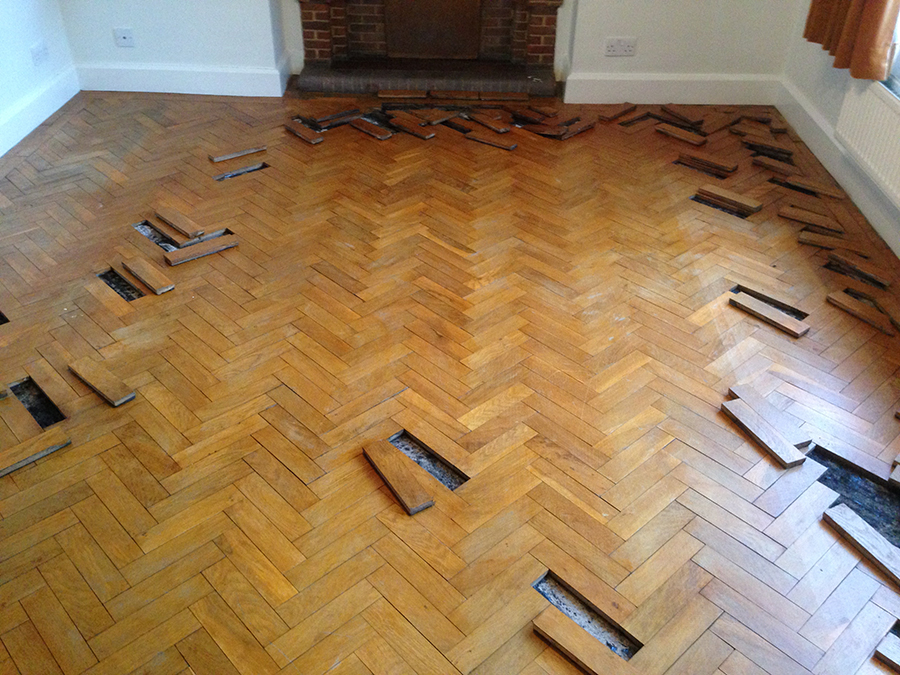
After
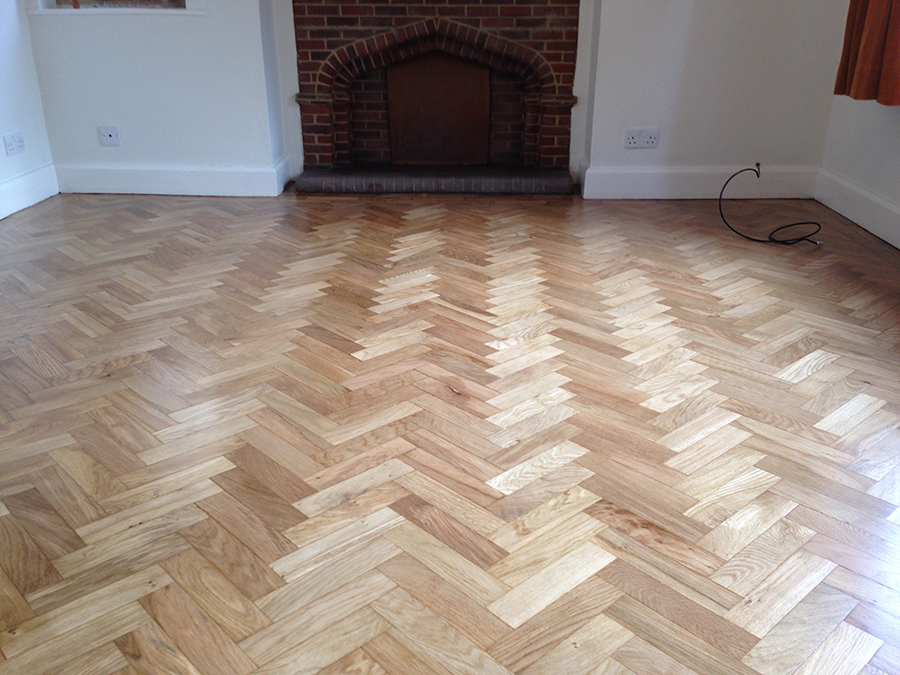
The oak blocks were re glued and affixed securely to the floor, the gaps between the blocks were then filled using the fine sand from the process to produce a good colour match. Finally the floor was sanded with our specialist parquet floor sanding machines and then clear satin lacquered.
A badly sanded Teak block floor in Redditch
A reclaimed oak parquet floor newly laid in Chipping Norton
Before
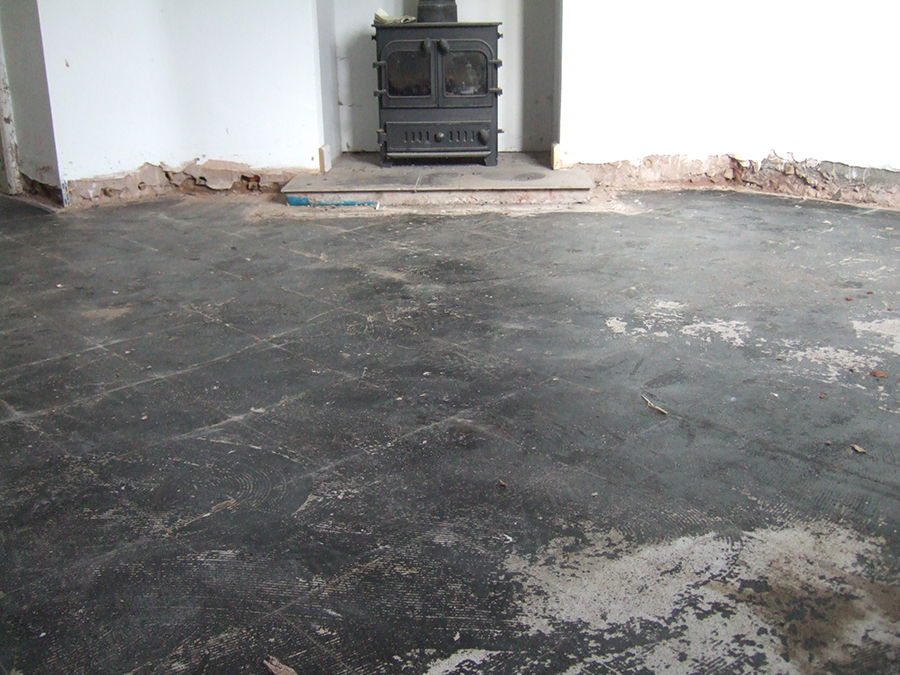
After
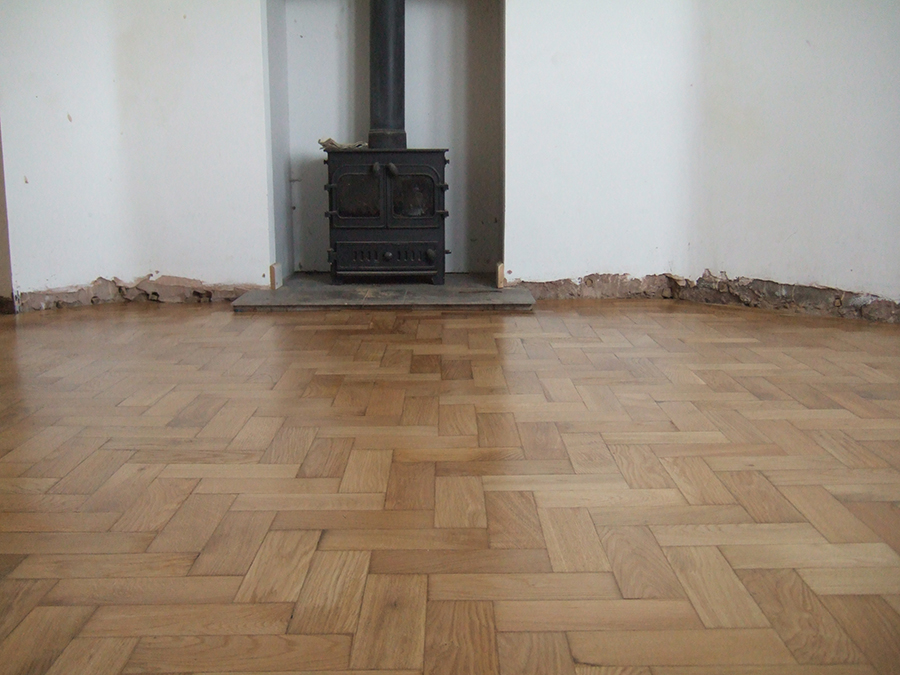
Laying a reclaimed parquet floor is quite a time consuming task but the results are very worthwhile! We sourced the old reclaimed blocks and prepared them for laying by removing the old bitumen from the backs and grooves. Then the sub floor was repaired to provide a level surface; the oak blocks were then affixed to the floor using suitable adhesives in a herringbone pattern with a double straight border. Finally the floor was gap filled using sand from the process mixed with clear resin hardener and the floor mechanically leveled sanded and lacquered.
Beech block floor restored in Pershore
Parquet floor repaired in Monmouth
Before
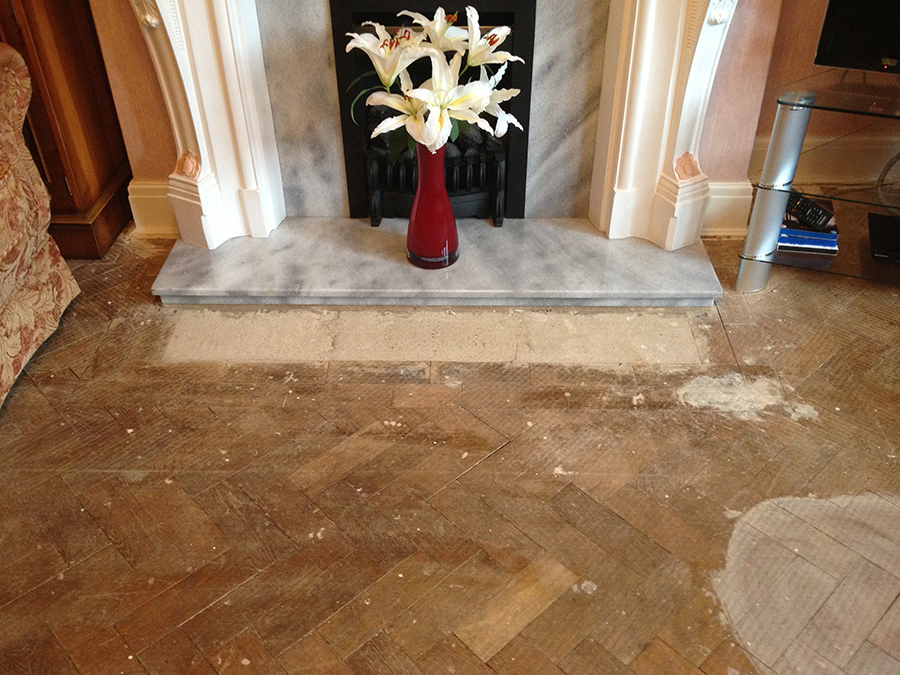
After
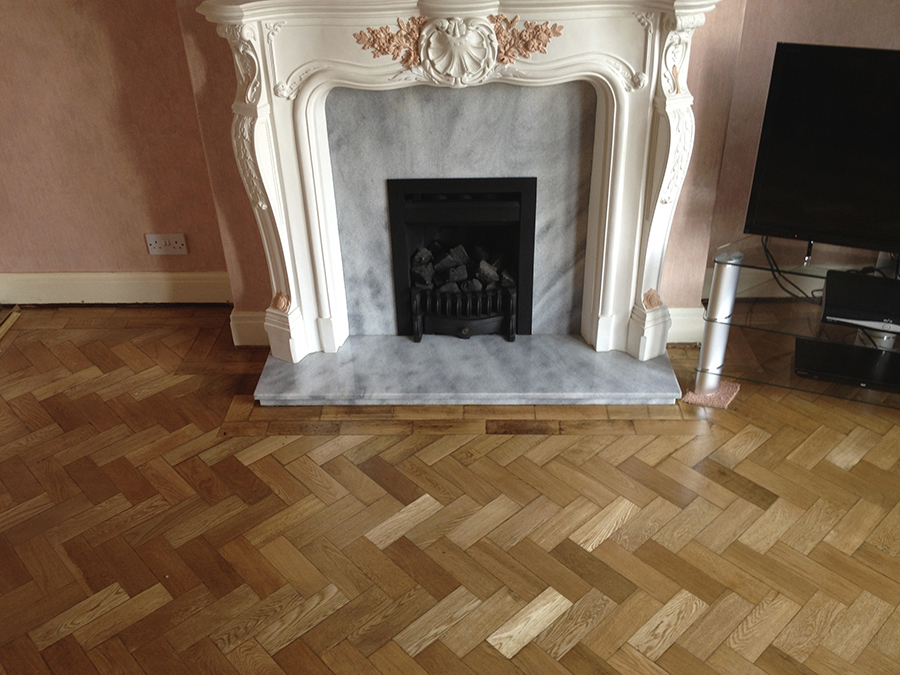
Another example of a repaired parquet floor in Birmingham
Finger block wood floor restoration in a Bristol community Hall
Common problems with parquet floors and Solutions - We provide the full range of services
| Common Problems | Likely causes | Our services |
| Damaged parquet blocks and /or missing parquet blocks |
|
|
| Parquet blocks are loose and move underfoot |
|
|
| Gaps between blocks |
|
|
| Parquet floor has sunken, raised or moved. |
|
|
| General poor appearance including scratches, stains and boards and lacking in definition. |
|
|
| Parquet floor is difficult to clean and maintain |
|
|
| Parquet floor has cork expansion damaged or missing. |
|
|
Back to top

